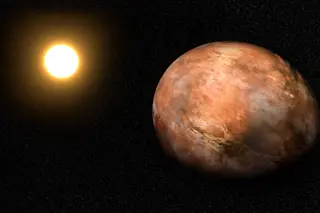For the uninitiated, the name “SETI Institute” may conjure up sleek glass buildings, mammoth radio dishes, and creased-brow researchers rushing about waving enigmatic printouts. After all, SETI—the Search for Extraterrestrial Intelligence—is one of the most far-reaching and controversial projects in science. The idea that the universe might contain civilizations other than our own probably helped get Giordano Bruno burned at the stake in 1600. It sparked a famous 19th-century newspaper hoax in which astronomers were said to have found a society of “man-bats” on the moon. It motivated Percival Lowell’s writings about canals on Mars at the turn of the last century, and it inspired Orson Welles’s infamous “War of the Worlds” radio broadcast in 1938, which sent hundreds of thousands of listeners into a panic over a fictional Martian invasion they thought was real.
As the culmination of that grand history, the SETI Institute deserves an equally grand location, ...















